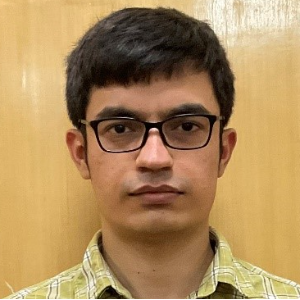Title : Intraocular pilocytic astrocytoma- A histopathological surprise
Abstract:
Purpose:
Intraocular masses are often difficult to diagnose in setting of retinal detachment and vitreous hemorrhage. Imaging is often characteristic but at times a diagnostic dilemma is there. One can think of enucleation for diagnostic purpose if the visual prognosis is poor and malignancy cannot be ruled out. One such enucleation in a 25-year-old led to a surprising finding of intraocular pilocytic astrocytoma.
Methods:
A 25-year-old male presented to a tertiary care center with complaint of diminution of vision in the left eye for six months. On examination his right eye visual acuity was 6/6 but the left eye had perception of light vision and inaccurate projection of the rays in two quadrants. The anterior segment was normal in the right eye but the left eye had shallow anterior chamber, posterior synechiae and cataractous lens. Right eye fundus had healed choroiditis patches. Left eye fundus could not be visualized due to vitreous hemorrhage. Ultrasound revealed a mass lesion with retinal detachment. The mass was not typical of choroidal melanoma with no acoustic hollowness. A contrast enhanced MRI was ordered and a mass lesion was seen in the left eye, however it was not a typical mushroom shaped mass. PET-CT did not reveal any metastasis. The visualization was not adequate enough for diagnostic biopsy. Given the poor visual prognosis an enucleation was planned.
Results:
Histopathology revealed an astrocytic neoplasm with piloid processes, occasional Rosenthal fibres and eosinophilic granular bodies suggestive of pilocytic astrocytoma. In immunohistochemistry it was GFAP (Glial Fibrillary Acidic Protein) and VIM (Vimentin) positive.
Conclusions:
This is probably first reported case of intraocular pilocytic astrocytoma.
Learning points
- Intraocular malignancies often do not have textbook picture on imaging and ultrasound.
- This particular patient was in mid-twenties and no specific diagnosis could be made on imaging.
- There is dilemma whether to go ahead with biopsy to establish diagnosis. Biopsy might increase risk of tumor spread. The visibility for biopsy in this case was an issue.
- One can consider enucleation for diagnostic purposes also if malignancy cannot be ruled out and diagnosis cannot be made, after informed consent.
- Pathologist have a very important role in ocular oncology. Intraocular Pilocytic astrocytoma has never been reported previously.




